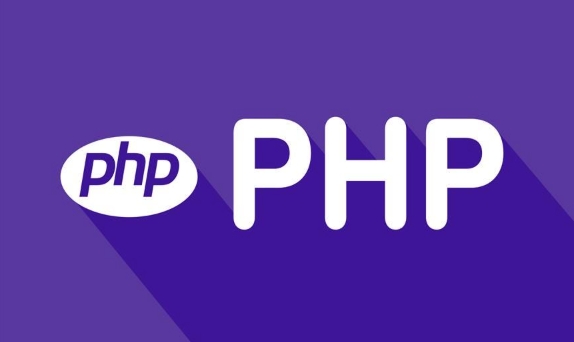 Backend Development
Backend Development
 PHP Tutorial
PHP Tutorial
 Explain PHP Exception catching and creating custom exceptions.
Explain PHP Exception catching and creating custom exceptions.
Explain PHP Exception catching and creating custom exceptions.
Jul 10, 2025 pm 01:57 PMIn PHP development, catch exceptions and customize exception classes to improve code robustness. 1. Use try to wrap error codes, catch catch and handle exceptions, throw throw exceptions manually; 2. Custom exception classes inherit Exceptions, such as DatabaseException, PermissionException, and targeted processing; 3. Get detailed error information through getMessage(), getCode(), getFile() and other methods for debugging, but the production environment needs to turn off sensitive output.

In PHP development, exception handling is an important part of building robust applications. Simply put, an exception is an error or unexpected behavior that occurs during the program's operation. By catching and handling these exceptions, program crashes can be avoided and clearer error feedback can be provided. Custom exceptions can help us better organize code structure and distinguish different types of errors.

Basic exception catching method
In PHP, try...catch structure is used to catch exceptions. The basic idea is: put the code that may make errors in try block, and once an exception is thrown, it will be caught by catch block immediately following it.
try {
// Code that may throw an exception throw new Exception("Error");
} catch (Exception $e) {
//Catch and handle exception echo "Catched exception:" . $e->getMessage();
}The key point here is:

-
throwis used to manually throw an exception. - The type in brackets after
catchdetermines which exceptions it can catch. -
Exceptionis a basic exception class built in PHP.
Note that if you are not sure what type of exception will be thrown, you can also use multiple catch blocks to handle different exception types separately.
Create a custom exception class
Although the built-in Exception class can meet most needs, in actual projects, we often need to define different exception types according to business logic. For example, database operation failed, insufficient permissions, errors in parameters, etc.

Custom exception class only needs to inherit PHP's Exception class:
class DatabaseException extends Exception {}
class PermissionException extends Exception {}This way, error types can be more explicitly identified when thrown or captured:
try {
if (!connectToDatabase()) {
throw new DatabaseException("Database connection failed");
}
} catch (DatabaseException $e) {
echo "Database Exception:" . $e->getMessage();
} catch (Exception $e) {
echo "Unknown exception:" . $e->getMessage();
}There are several benefits to doing this:
- Improve code readability and see the exception type at a glance.
- It is easier to do targeted processing, such as recording logs and returning specific response codes.
- It is conducive to teamwork and unifies exception naming rules.
Detailed output and debugging of exception information
When an exception occurs, in addition to obtaining simple error information, you can also access more details to help troubleshoot problems.
Several commonly used methods include:
-
$e->getMessage(): Get the error description -
$e->getCode(): Get the error code -
$e->getFile()and$e->getLine(): locate the file and line number of the error occurred -
$e->getTrace()or$e->__toString(): Get the complete call stack information
For example:
catch (Exception $e) {
echo "Error message:" . $e->getMessage() . "<br>";
echo "Error location:" . $e->getFile() . "Thread" . $e->getLine() . "Line<br>";
echo "<pre class="brush:php;toolbar:false">" . $e->getTraceAsString() . "";
}This information is very useful during the debugging phase. But it should be noted that detailed error output should be turned off in production environments to avoid exposing sensitive information.
Basically that's it. Exception handling is not a complex mechanism, but it is easily overlooked or used in irregular terms. The rational use of built-in and custom exceptions can make your PHP applications more maintainable and fault-tolerant.
The above is the detailed content of Explain PHP Exception catching and creating custom exceptions.. For more information, please follow other related articles on the PHP Chinese website!

Hot AI Tools

Undress AI Tool
Undress images for free

Undresser.AI Undress
AI-powered app for creating realistic nude photos

AI Clothes Remover
Online AI tool for removing clothes from photos.

Clothoff.io
AI clothes remover

Video Face Swap
Swap faces in any video effortlessly with our completely free AI face swap tool!

Hot Article

Hot Tools

Notepad++7.3.1
Easy-to-use and free code editor

SublimeText3 Chinese version
Chinese version, very easy to use

Zend Studio 13.0.1
Powerful PHP integrated development environment

Dreamweaver CS6
Visual web development tools

SublimeText3 Mac version
God-level code editing software (SublimeText3)

Hot Topics
 How to implement error handling and custom exceptions in FastAPI
Jul 29, 2023 pm 07:00 PM
How to implement error handling and custom exceptions in FastAPI
Jul 29, 2023 pm 07:00 PM
How to implement error handling and custom exceptions in FastAPI Introduction: FastAPI is a modern web framework based on Python. Its high performance and rapid development capabilities make it increasingly popular in the development field. In actual applications, errors and exceptions are often encountered. This article will introduce how to implement error handling and custom exceptions in FastAPI to help developers better handle and manage error situations in applications. FastAPI error handling: FastAPI provides a
 Creation and use of Java custom exceptions
May 03, 2024 pm 10:27 PM
Creation and use of Java custom exceptions
May 03, 2024 pm 10:27 PM
Custom exceptions are used to create error messages and handling logic. First, you need to inherit Exception or RuntimeException to create a custom exception class. Then, you can override the getMessage() method to set the exception message. Exceptions are thrown through the throw keyword. Use try-catch blocks to handle custom exceptions. This article provides a practical case for parsing integer input and throwing a custom InvalidInputException when the input is not an integer.
 How to create custom exception handler in CakePHP?
Jun 03, 2023 pm 11:01 PM
How to create custom exception handler in CakePHP?
Jun 03, 2023 pm 11:01 PM
CakePHP is a popular PHP framework that allows you to quickly build web applications. Various exceptions can occur while processing user input and performing tasks such as database operations. How can exceptions be handled so that an error message is not presented directly to the user when a problem occurs? This is where custom exception handlers come in. In this article, we will explore how to create custom exception handlers in CakePHP. Why do we need custom exception handlers? When a web application throws an exception, Cak
 Python exception handling: master the sharp edge and control your code life
Feb 25, 2024 pm 04:10 PM
Python exception handling: master the sharp edge and control your code life
Feb 25, 2024 pm 04:10 PM
Python is a powerful programming language, but it's not perfect. When running a Python program, you may encounter a variety of exceptions, causing the program to crash or produce erroneous results. In order to avoid these situations from happening, we need to handle abnormal situations, that is, exception handling. The basic syntax for exception handling is try-except-finally. The try block contains code that may cause an exception, the except block is used to catch exceptions, and the finally block is used for code that will be executed regardless of whether an exception occurs. The following is a simple exception handling example: try: #Code that may cause exceptions exceptExceptionase: #Catch exceptions and handle fi
 C++ program creates custom exception
Aug 26, 2023 pm 07:53 PM
C++ program creates custom exception
Aug 26, 2023 pm 07:53 PM
Exceptions are a very core concept of C++. Exceptions occur when an undesired or impossible operation occurs during execution. Handling these unwanted or impossible operations in C++ is called exception handling. Exception handling mainly uses three specific keywords, which are ‘try’, ‘catch’ and ‘throw’. The ‘try’ keyword is used to execute code that may encounter exceptions, the ‘catch’ keyword is used to handle these exceptions, and the ‘throws’ keyword is used to create exceptions. Exceptions in C++ can be divided into two types, namely STL exceptions and user-defined exceptions. In this article, we focus on how to create these custom exceptions. More details on exception handling can be found here. Use a single
 Solution to Java custom exception handling exception (CustomExceptionHandlerException)
Aug 17, 2023 pm 06:18 PM
Solution to Java custom exception handling exception (CustomExceptionHandlerException)
Aug 17, 2023 pm 06:18 PM
Solution to Java custom exception handling exception (CustomExceptionHandlerException) In Java development, we often encounter various abnormal situations. In addition to the exception types already defined in Java, we can also customize exception types to better handle specific business logic. However, in the process of using custom exception handling, you sometimes encounter some problems, such as CustomExceptionHandlerExcept
 How to customize exceptions in Java?
Apr 12, 2024 am 09:06 AM
How to customize exceptions in Java?
Apr 12, 2024 am 09:06 AM
Creating custom exceptions in Java improves application robustness. It requires: Create a custom exception class, inherited from Exception or RuntimeException. Throws a custom exception, similar to throwing a regular exception. Catch custom exceptions when calling methods for more informative error messages.
 How to catch and handle custom exceptions in PHP?
May 09, 2024 pm 10:00 PM
How to catch and handle custom exceptions in PHP?
May 09, 2024 pm 10:00 PM
How to catch and handle custom exceptions in PHP: Inherit the Exception class to create custom exceptions. Use the throw keyword to throw a custom exception. Use try, catch, and finally blocks to catch and handle exceptions.





